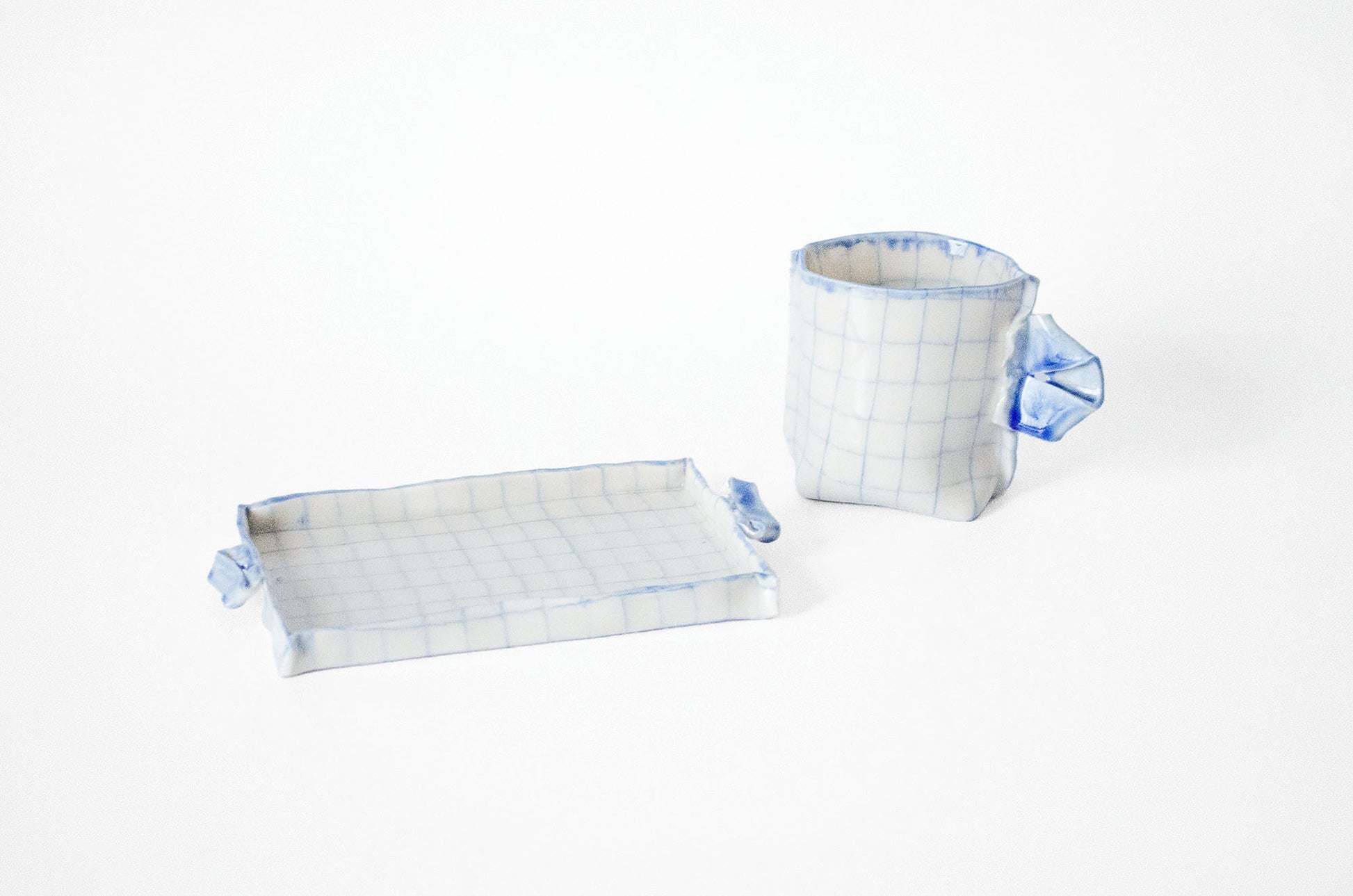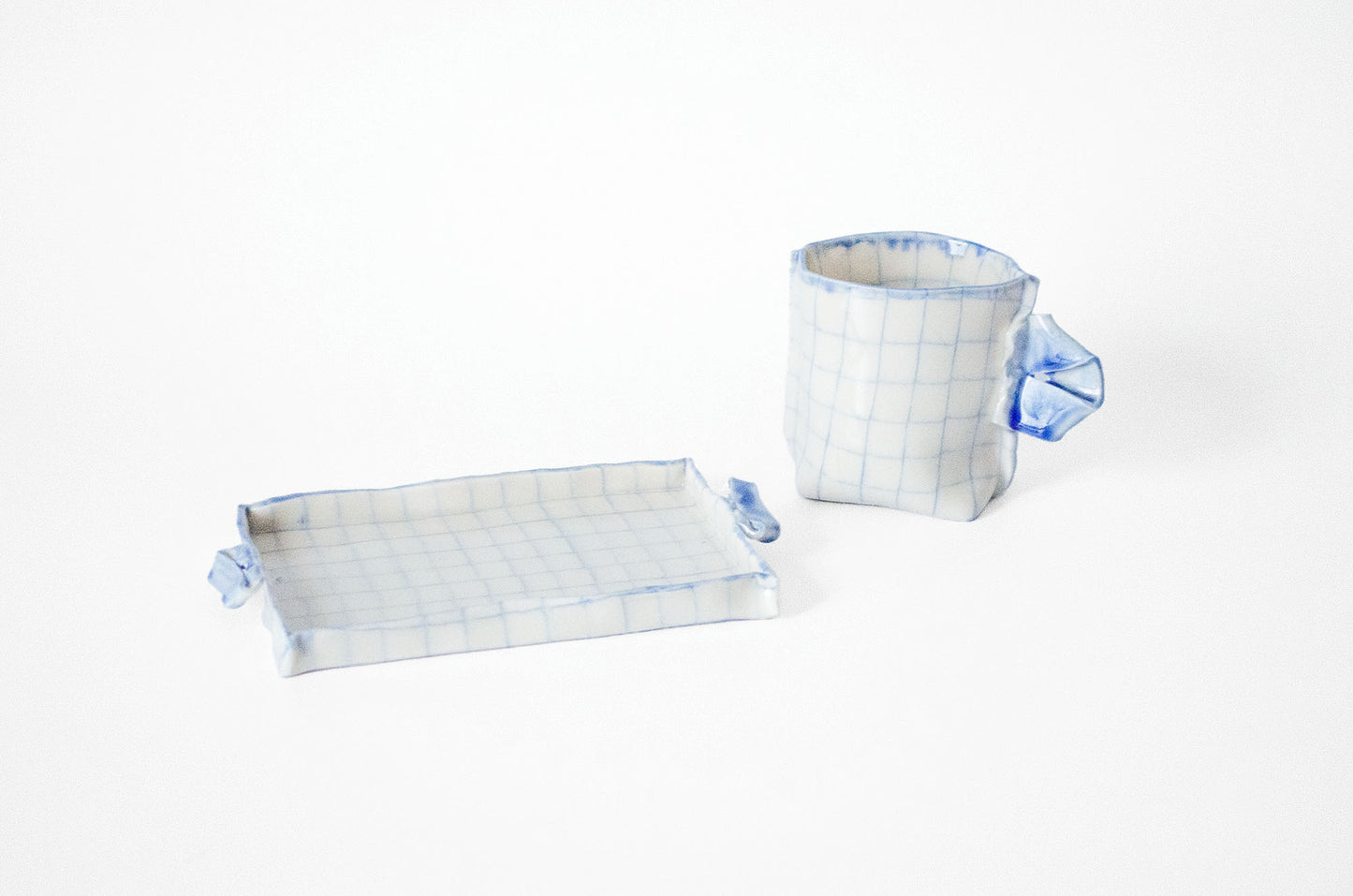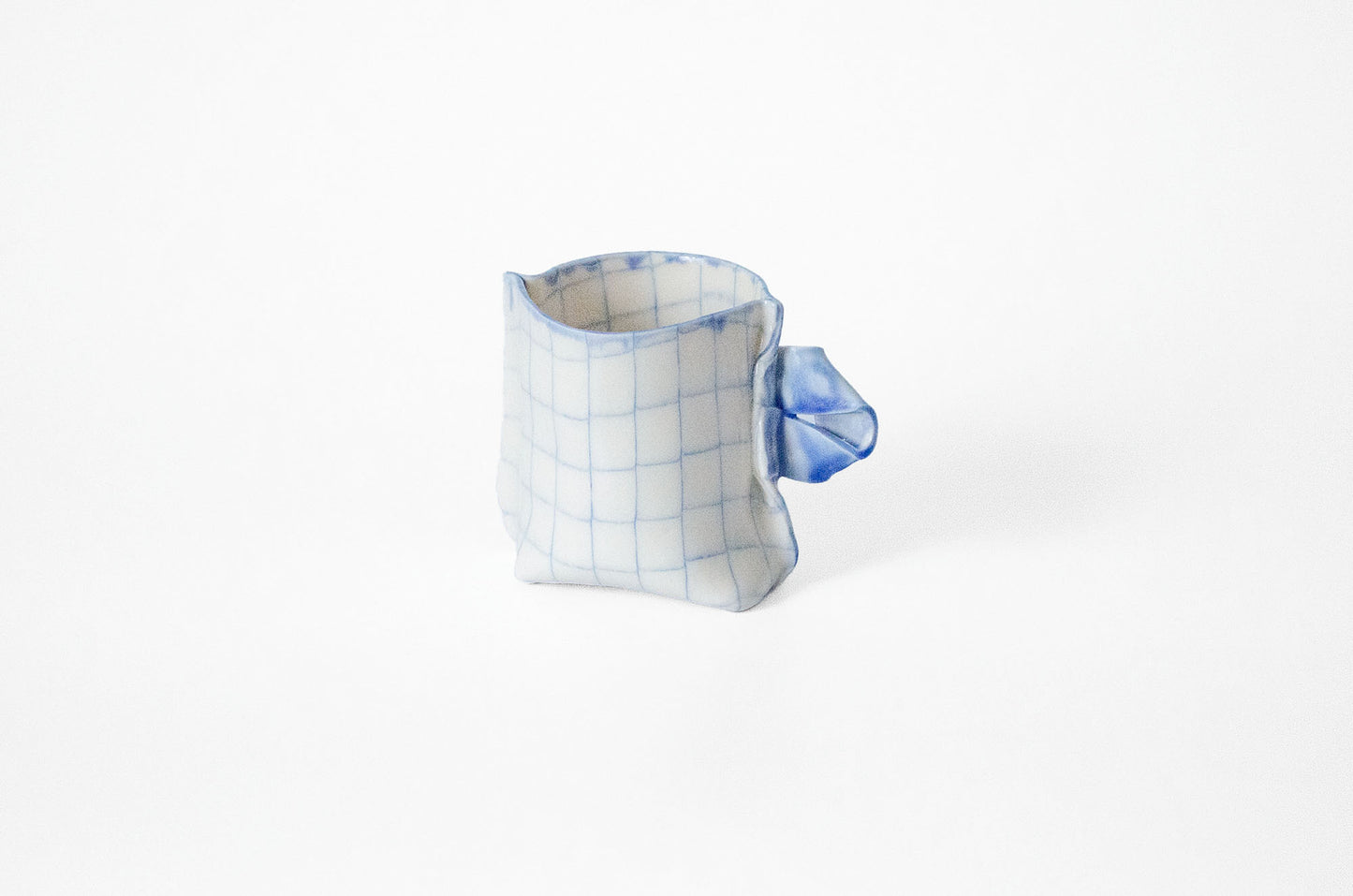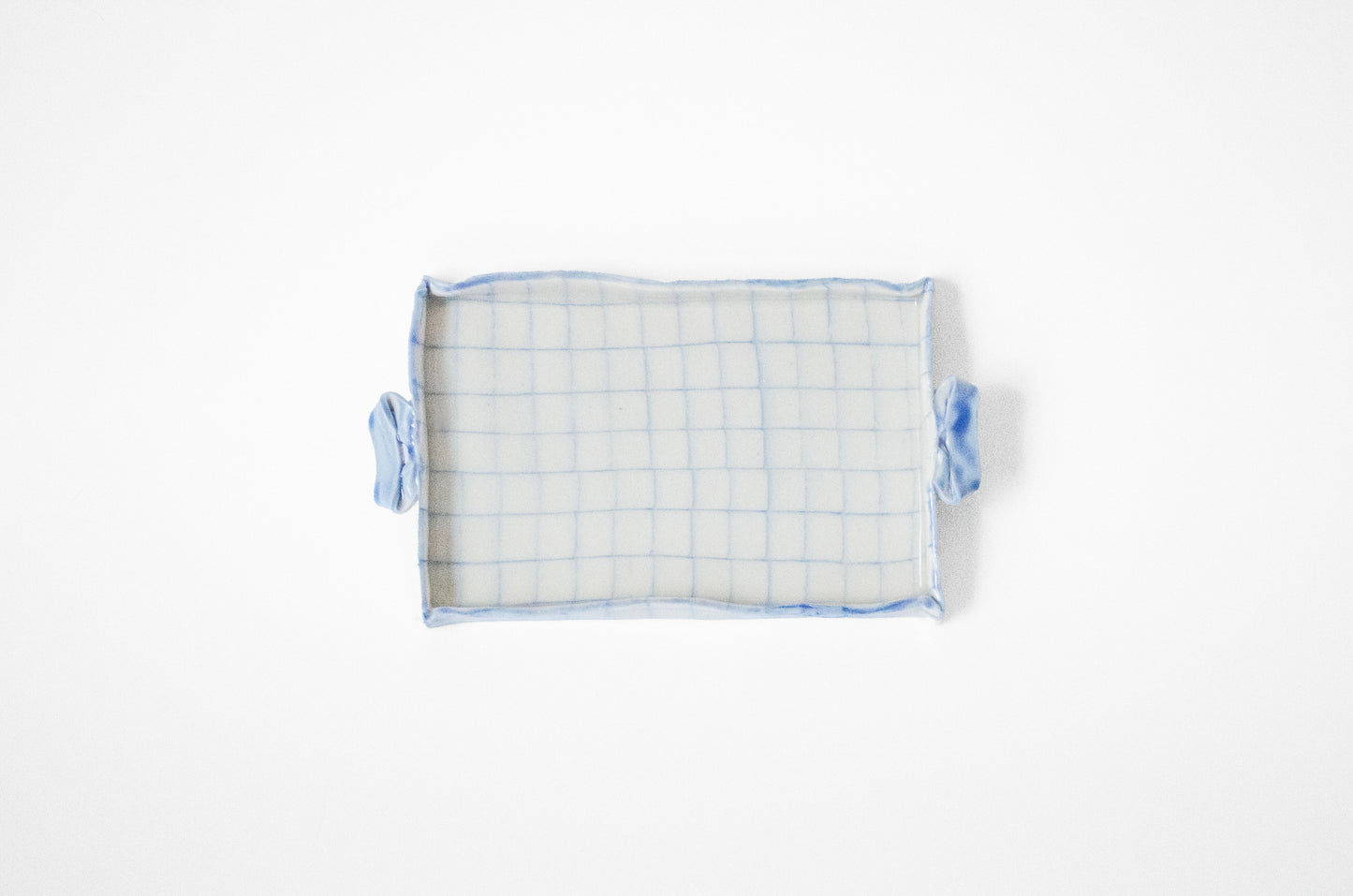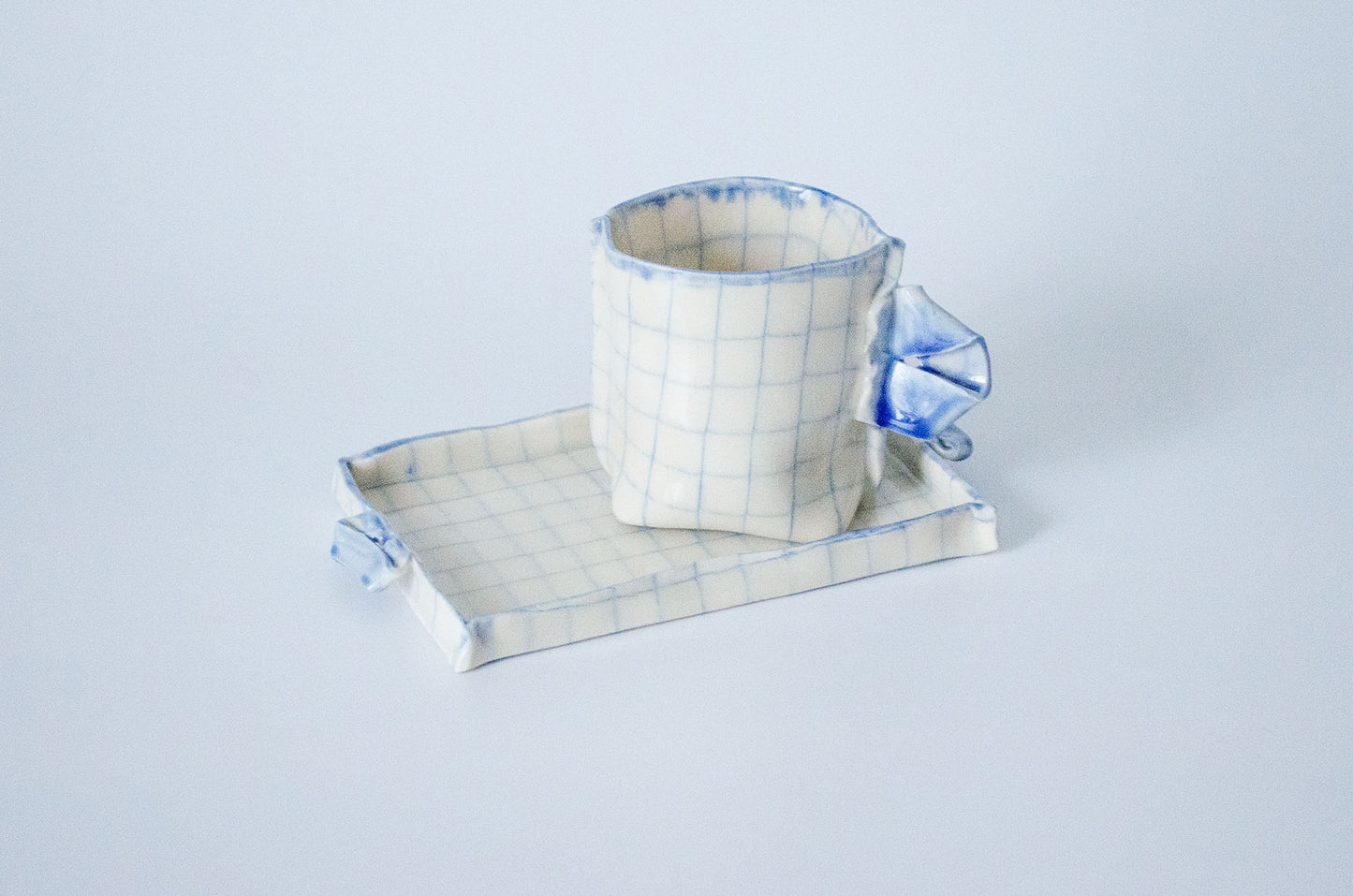
Glossary of Japanese - English Ceramics Terminology | 英日陶芸用語集
Share
Introduction / はじめに
Hi everyone! Here is a list of ceramics (pottery, porcelain, stoneware ) terms in Japanese and English (American English), as well as a personal memorandum.
Please bookmark this page, as it may be newly updated in the future. Also, if you like, I would be glad if you could take a look at my work.
If you have any questions, feel free to message me.
個人的な備忘録も含め、ここでは陶芸にまつわる用語の英語表記をリスト化していきます。今後も更新していきますので、ぜひブックマークをして定期的に見にきてください。また、当サイトの私の作品を見ていただけたら嬉しいです。
ご質問などありましたらお気軽にどうぞ。
Concepts, Techniques / 概念、技法
Pottery / 陶芸 (Togei)、やきもの (Yakimono)
In Japanese, making pottery as well as handcrafts using ceramic or porcelain clay is generally referred to as 陶芸 (Togei).
英語では、比較的民芸品的な陶芸-いわば「やきもの」をPottery、そして陶土を用いた造形物全般をCeramicsと呼び表す傾向がある。
Ceramic / 陶器(Touki)、陶(Tou)
Porcelain / 磁器 (Jiki)、瀬戸もの (Setomono)、伊万里(Imari)
In Japan, porcelain is called Jiki or Setomono. Unlike European soft porcelain, Japanese porcelain is hard porcelain with high firing temperatures.
西洋の磁器は日本の有田焼をはじめとする磁器と異なり、低温焼成のソフトポーセリンに分類されることがある。
Stoneware / せっ器(Sekki)
As a matter of fact, most of what is called ceramic in Japan is finished with high firing, which is what is called stoneware in the US. In most cases, ceramic is not fired at cone 6 in Japan, but at cone 8 or higher.
実のところ、日本でceramicと翻訳される陶器は、アメリカではstonewareと分類されるものがほとんどである。1250度くらいで焼成される日本の陶器に比べ、アメリカでceramicと呼ばれているやきものの焼成温度は1100度程度(cone 6)が基本であり、比較的脆い。
Earthenware / 土器(Doki)
Japan has been a land of earthenware production since B.C.
縄文土器は「Jomon」で通じる。
Agateware, Marbled Pottery, Neriage Pottery / アゲートウェア(agateware)、練上げ(neriage)
This is a technique I often use. Agateware or marbled pottery is made by layering multiple colors of clay in a pancake-like shape to create layers of color, whereas the Japanese technique of Neriage is formed by blending multiple colors of clay into a mass and lightly kneading them together before forming. In my work, multiple colors or multiple types of clay are attached vertically rather than in parallel, so the patterns appear bolder. Neriage is formed on a potter's wheel and Nerikomi is formed by slab building.
練り上げや練り込み技法は中国が発祥で、近代以降日本の陶芸の世界において、人間国宝の松井康成氏を中心に再興した。アメリカでは練上げはMarbled PotteryまたはAgatewareとして知られているが、さほど知名度のない技法である。陶芸ファンにはネリアゲで通じることが多い。
Firing / 焼成 (Shosei)
Bisque is called Suyaki. Firing after glazing is called Hon-Yaki or Hon-Shosei.
ベイキングではないので注意。
Kneading, Wedging / 土練り(Tsuchi-Neri), 菊練り(Kiku-Neri)
Spiral wedging is called Kiku-Neri because of its shape like a chrysanthemum flower (Kiku).
ニーディング(kneading)はパンや粘土状のものを捏ねること。ウェッジング(wedging)の方が陶芸用語としてよく使われる。
Hand-building / 手びねり(Te-Bineri)
Coiling is called Himo-Zukuri. Many of the tea bowls that were highly regarded in the Japanese tea ceremony were hand built.
紐づくりはコイルを巻き付けるようなイメージでCoiling(コイリング)という。
Wheel-throwing / ろくろ形成(Rokuro-Keisei)
Throwing-off-the-hump, in which multiple pieces are thrown from a large lump, is Bai-Biki while throwing one piece at a time is Ikko-Biki.
大きな塊から沢山うつわを引く「バイ引き」のことは「Throwing-off-the-hump」という。
Coning up, Coning down, Centering /土上げ(Tsuchi-age)、土下ろし(Tsuchi-oroshi)、土殺し(Tsuchi-goroshi)
A technique used to form on the potter's wheel by centering the clay lumps as they are rotated as well as de-air from the clay. In Japan, this technique is sometimes called Tsuchi-goroshi, meaning killing the clay.
Slab-building / たたら形成(Tatara-Keisei)、板づくり(Ita-Zukuri)
Casting / 鋳込み形成(Ikomi-Keisei)
Trimming / 削り(Kezuri)
Parts, Type / 部位、種類
Foot / 高台(Kodai)
In Japanese ceramics, the value of a piece of pottery, especially tea utensils, is sometimes determined by the finish of the foot, which is the bottom of the vessel.
欧米では食事の際に器を手で持ち上げるマナーがないため、カップ類以外では日本の器のように高台の作り込みに特にこだわることがない。
Body / 胴(Doh)
Lip / 口縁(Ko-En)、口辺り(Kuchi-Beri)
Handle / 取手(Totte)
Bowl / 碗(Wan)
The tea bowl is Chawan.
Cup / カップ(Cup)、湯呑み(Yunomi)
Sencha drinking cup called Yunomi.
Vase, Flower Vase / 花瓶(Kabin)、花入(Hana-Ire)
Varsatile Cup, Sobachoko / フリーカップ(free cup)、蕎麦猪口(Soba-Choko)
A versatile cup called Sobachoko is popular in Japanese studio ceramics. Originally designed to hold the dipping sauce for soba noodles, the simple shape makes it easy to use for serving tea, sake, appetizers, and ice cream, etc.
Sake Cup / ぐい呑み(Gui-Nomi)、お猪口(O-Choko)、盃(Sakazuki)
There are many different types of sake in Japan, as well as various types of sake cups, such as Guinomi, which is about the size of a teacup for casual sake enjoyment, O-Choko, which is small enough to share sake with others, and Sakazuki, which is used to enjoy high-quality sake at special events.
Sake Carafe, Sake Bottle / 徳利(Tokkuri)
The carafe used to serve sake is called a Tokkuri, and is often paired with a small sake cup called an O-Choko. In winter, the Tokkuri is placed in a hot pot (Nabe) and heated to enjoy hot sake called Atsu-kan.
Mug / マグカップ(mug cup)
Dish, Plate, Platter / 皿(Sara)
All flat-shaped vessels are denoted as Sara.
ディッシュは「料理」を表すこともある。プラッターは大皿を表す。一般的な皿はプレート。
Lidded Jar / 蓋物(Futa-Mono)
Pottery with lids is termed Futa-Mono in general.
装飾的な蓋物はDecorative Jarなどとも呼ばれる。
Materials / 材料
Clay / 粘土 (Nendo)、陶土 (Toudo)
The clay used in ceramics is generally called Nendo, but when limited to ceramic clay, it is called Toudo. For porcelain, it is called Jiki-do or Ji-do, or Jiki-Tsuchi.
陶土も一般的な粘土に集合してClayと表すが、陶芸に使う土を示したい場合はCeramic Clay(磁器土の場合はPorcelain Clay)とする。
Glaze / 釉薬 (Yuyaku), うわぐすり (Uwa-gusuri)
Overglaze is called Uwa-e and Underglaze is called Shita-e or Sometsuke. Glazing is Yu-Gake.
釉薬のことはGlazeと呼ばれるが、上絵付けをOverglaze、下絵(染付)をUnderglazeと呼ぶように、絵による加飾に関する語にglazeと記されているのは日本人に馴染みのない表現。
Slip / 化粧(Kesho)、どべ(Dobe)
The slip used for decoration is called Kesho, and the mud used as glue is called Dobe.
化粧掛けに用いる液状の土も、接着に用いるどべのこともスリップと呼ぶ。
Feldsper / 長石(Cho-Seki)
Silica / 珪石(Kei-Seki)
Whiting / 炭酸カルシウム(Tansan-Karushium)
Kaolin / カオリン (Kaolin)、陶石(Tou-Seki)
Lime / 石灰(Sekkai, Hai)
In Japan, transparent glazes are often prepared simply by blending soda feldspar, kaolin, and lime in a ratio of about 6:1:3.
私個人の感想かもしれないが、アメリカの釉薬のレシピは100%のシリカや100%の炭酸カルシウムなど純粋な材料を主に使い、日本の釉薬のように草木灰などの天然素材はあまり用いられない。その方が長石のような特定の地域でしか取れない材料に依存せず釉薬が作れるのかもしれない。
Plaster / 石膏(Sekkou)
Equipment, Tools / 機材、道具
Potter's Wheel / ろくろ(Rokuro)
With the exception of a region called Tamba, Japanese people basically form in a clockwise direction.
欧米ではろくろ形成を反時計回り、削りを時計回りでするらしい。真偽は不明
Kiln / 窯(Kama)
Traditional Japanese ceramics are fired at 1100~1300C (2012~2372F) in wood-fired kilns. Contemporary artists often use electric kilns.
アメリカ製の陶芸はCone Fire(オートンコーン)というシステムを使って、陶土や釉薬の種類を適した焼成温度帯に分け、焼成の温度管理を簡易化させている。そのためアメリカの電気窯ではコーン焼成の温度設定がされているのが一般的である。
Banding Wheel / 手ろくろ(Te-Rokuro)
Pottery Bats / 亀板(Kame-Ita)
Potters Rib / こて(Kote)
The throwing stick is called E-gote.
柄ごてはThrowing Stick。
Trimming Tool / かんな(Kanna)
Brush / 筆(Fude)、刷毛(Hake)、濃(Dami)
The narrow brush is called Fude, the wide one is called Hake, and the special brush for painting with indigo color underglaze (cobalt stain) called Gosu is called Dami.
Chamois leather / なめし皮(Nameshi-Gawa)
Cutting Tool, Cutting Wire / しっぴき(Shippiki)、弓(Yumi)
The string or wire-like tool used to separate the bottom of the greenware from the bats or lumps of clay is called Shippiki, and the bow-shaped wire is called Yumi (means bow).
Traditional Glaze, Decorating Method / 伝統釉薬、加飾法
This section lists mainly the names of Japanese traditional glazes and decorating techniques.
主に日本の伝統釉薬と加飾技法の名称をリストアップします。
Copper Green Glaze / 織部釉 (Oribe Yu)
The dark green glaze with the addition of copper oxide is called "Oribe" in Japan. Though it seems to derive its name from its olive color, it was named after Furuta Oribe, a 16th~17th century tea master.
Iron Glazes / 鉄釉 (Tetsu Yu)
- Brown / 飴釉 ( Ame Yu)
- Yellow / 黄瀬戸(Ki-Seto)
- Red / 鉄赤 (Tetsu Aka)
- Black / 鉄黒 (Tetsu Kuro), 瀬戸黒 (Seto-Kuro)
The first Draft is Jan 9th, 2023 / 初稿 2023年1月9日
The latest Update is Mar. 2nd, 2023. /最終更新日 2023年3月2日

